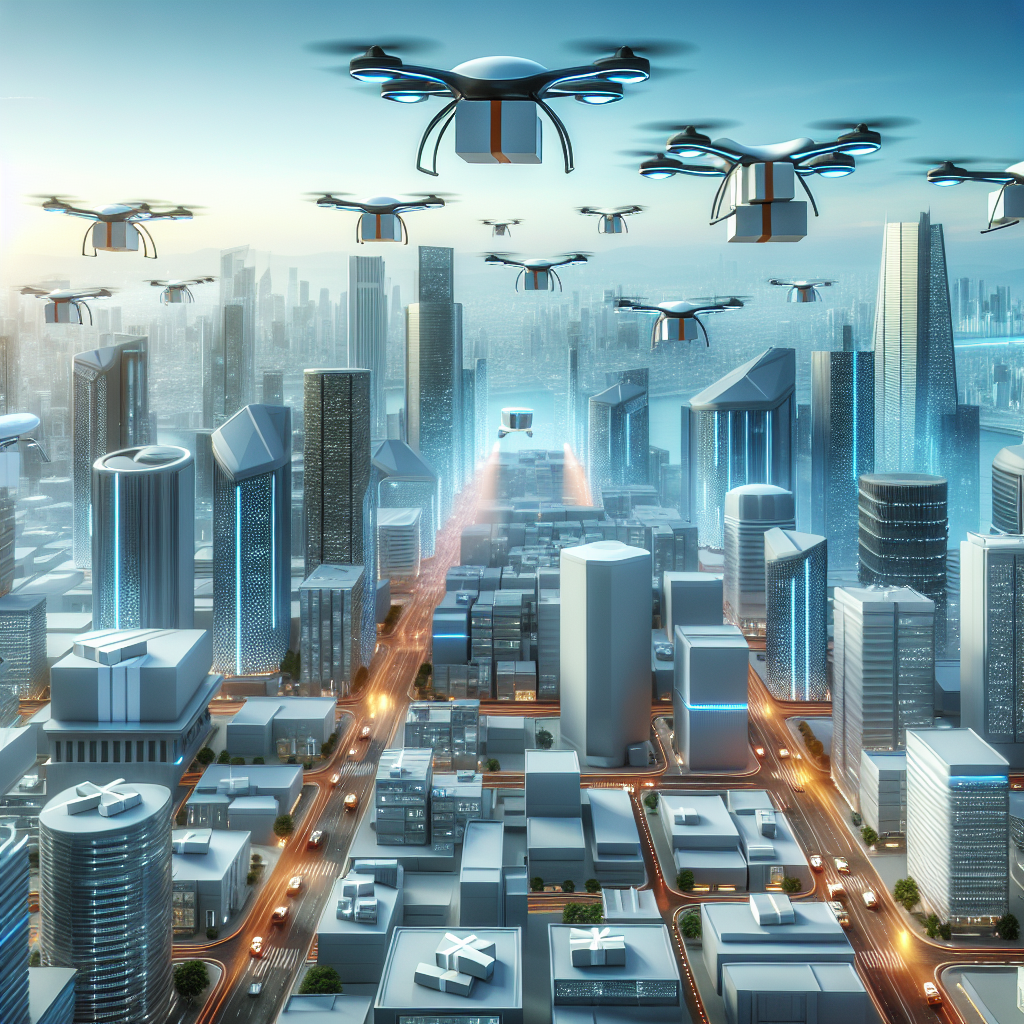The Future of Autonomous Drones in Delivery Services
The emergence of advanced technologies has prompted a paradigm shift in various industries, and one of the most exciting developments is the use of autonomous drones in delivery services. These flying machines promise to revolutionize the way goods are transported, offering unprecedented speed, efficiency, and cost-effectiveness. In this article, we will explore the future of autonomous drones in delivery services, examining their potential impacts, benefits, challenges, and the technological advancements that make them a viable solution.
Understanding Autonomous Drones
Autonomous drones are unmanned aerial vehicles (UAVs) capable of carrying out various tasks without direct human intervention. Equipped with sophisticated sensors, navigation systems, and artificial intelligence (AI), these drones can autonomously navigate, locate delivery points, and avoid obstacles. The future of these drones offers a myriad of applications, particularly in the logistics and delivery sectors.
The Rise of Delivery Drones: Market Insights
The global drone delivery market is anticipated to expand rapidly in the coming years. According to industry analysts, the drone logistics market could reach $29 billion by 2027, driven by advancements in drone technology, growing demand for efficient delivery services, and rising consumer expectations for faster shipments. Companies like Amazon, Google, and UPS are already investing heavily in integrating drone technology into their delivery mechanisms, aiming to enhance speed and reduce delivery costs.
Benefits of Autonomous Drones in Delivery Services
- Speed: Drones can significantly shorten delivery times. Unlike ground transportation, which can be affected by traffic congestion and other road conditions, drones can fly directly to their destination.
- Cost-Effectiveness: By reducing the need for delivery personnel and vehicles, companies can lower operational costs. Drones can also reduce fuel consumption and emissions compared to traditional delivery methods.
- Accessibility: Drones can reach remote or hard-to-access locations that are challenging for traditional delivery vehicles, thereby expanding the potential market for companies.
- Customer Satisfaction: Faster delivery times suit the growing consumer expectation for swift service, enhancing overall customer satisfaction.
- Reduced Traffic Emissions: As drones typically run on electric power, they can contribute to lower greenhouse gas emissions, offering a more sustainable delivery option.
Technological Innovations Powering Drones
The success of autonomous drones in delivery is attributable to several technological innovations, including:
1. Navigation and Mapping Technologies
Advanced GPS systems, combined with real-time mapping technologies, enable drones to navigate accurately and efficiently, identifying the best routes and adapting to dynamic environmental factors.
2. Artificial Intelligence and Machine Learning
AI-driven systems allow drones to learn from their experiences, optimizing their flight paths and delivery processes over time. This capability enhances safety and efficiency as the drones adapt to various delivery scenarios.
3. Battery Technology
Improvements in battery technologies have resulted in longer flight times and increased payload capacities, enabling drones to cover more significant distances and deliver heavier packages.
4. Regulations and Compliance
As drones gain traction in the delivery space, compliance with aviation regulations is increasingly essential. The Federal Aviation Administration (FAA) and other regulatory bodies have been developing frameworks for the safe operation of autonomous drones, which is crucial for widespread adoption.
Challenges on the Horizon
Despite the potential, the journey toward integrating autonomous drones into delivery services is not without challenges:
1. Regulatory Hurdles
Strict regulations regarding airspace restrictions, flight paths, and safety standards can impede the deployment of autonomous drone services. Companies must navigate these regulations while pushing for adaptations that facilitate drone operations.
2. Safety Concerns
Ensuring the safety of drones in populated areas remains a critical challenge. Potential collisions with buildings, power lines, or even other aircraft must be addressed to earn public trust.
3. Public Acceptance
Consumer acceptance of drone delivery is paramount. Concerns about privacy, noise pollution, and safety may affect the willingness to embrace this new delivery mode. Education and transparency could play significant roles in alleviating these fears.
The Future Outlook for Drone Deliveries
As technology continues to evolve, the future of autonomous drones in delivery services looks promising. Companies that successfully navigate regulatory landscapes and consumer concerns could stand to gain significant market advantage.
Predicted Trends
- Increased Use in Urban Areas: As cities grow, the demand for efficient delivery solutions will increase. Drones may alleviate congestion by taking to the skies, serving as on-demand transporters of goods.
- Integration with E-Commerce: Major e-commerce platforms are likely to adopt drones for last-mile delivery, offering faster services to meet consumer expectations.
- Improved Collaboration with Logistic Networks: Collaboration between drone services and existing logistical frameworks could enhance system efficiencies and streamline deliveries.
- Implementation of Tracking Solutions: Drones will integrate with advanced tracking technologies, allowing customers to monitor their deliveries in real time.
Conclusion
The future of autonomous drones in delivery services is laden with potential. With technological advancements paving the way, companies must embrace innovation and address the inherent challenges to unlock the benefits these drones offer. As we move forward in the digital age, the role of drones in delivery services will likely transform logistics, provide new opportunities for businesses, and ultimately enhance the consumer experience.

